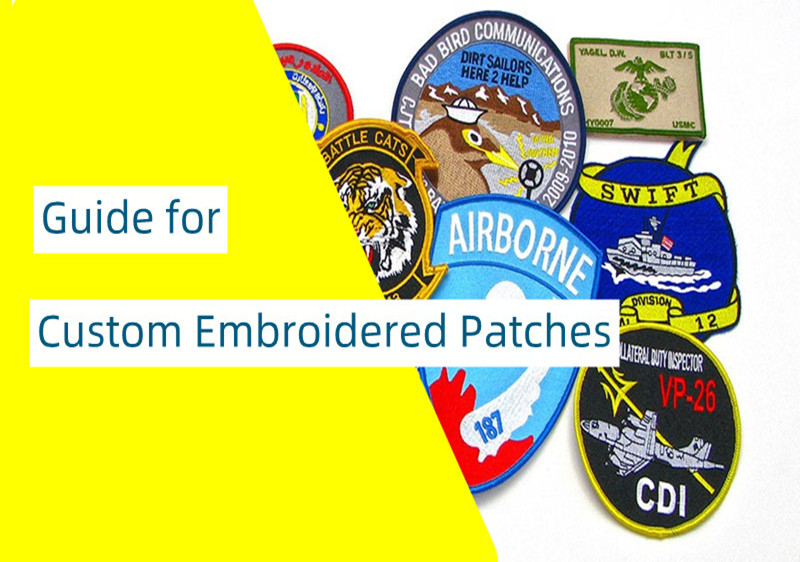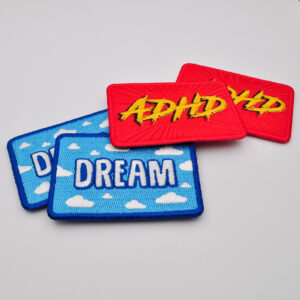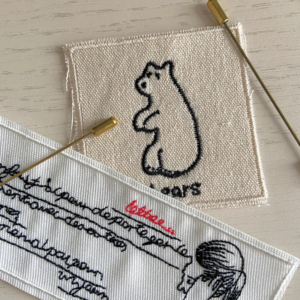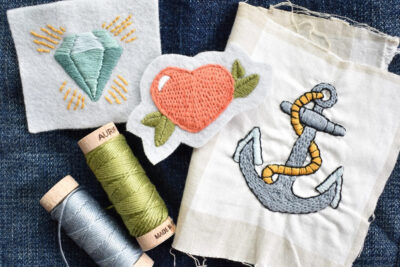Guide for Custom Embroidered Patches

Custom embroidered patches always attract the naked eye. It’s never a bad decision to decorate your belongings with some custom patches or custom keychains that enhance your overall aesthetics!
Although, making custom embroidered patches can be a hectic process if you don’t follow the right steps. Moreover, is it possible to use a sewing machine to serve our purpose?
Let’s find out.
Can you embroider patches with a sewing machine?
You might have seen in vogue patches on coats and covers to give them a more bubbly look and consider what goes into them. Those are weaved patches with a long history tracing all the way back to the days when string sewed beautifications were very famous. Yet again in the style area, these embellishments are a thing.
A material identification is one more name for a weaved fix. A customised weaved fix can be made thereafter and effortlessly stuck to some other fabric. We have all the right skills to impart to you assuming that you are new to weaving fixing or on the other hand assuming you are an embroiderer who is attempting weaving fixing interestingly. A fledgling's manual for weaved patches might be viewed here.
Make your own weaved fix at home:
To figure out how to make a weaved fix for yourself, follow the means underneath.
- Make a plan with bigger blueprints.
- Cut a piece 2 inches longer than the plan on one or the other side. Cut two pieces, one from thick material and the other from dress texture. Utilizing a hot iron, weave the connecting texture on the opposite of your texture piece.
- The fabric part ought to be painted. Paint with a weakened dull variety or on the other hand, on the off chance that you're delivering a light example, simply utilize dark to frame it.
- Move your plan on the dark region with chalk so you have a firm framework.
- Make a layout join with the variety you maintain that the diagram should be, and afterward fill in the holes with glossy silk fasteners.
- Make a second communicating layer to keep it set up, and if essential, add additional interacting layers to make it harder.
- Variety the edges and cut out the example. Stick twofold sided melding to the converse of your special DIY weaved fix, and it's prepared to sew or adhere to your #1 material.
- An instructional exercise on utilizing a business weaving machine to make a weaving patch:
 These are the essential moves toward follow:
These are the essential moves toward follow:
- Select a fix. Place the digitized fix plan you need to use on your weaving machine.
- Circle a piece of water-dissolvable lattice in the suitable band size to permit various patches to be sewed in a solitary hooping. Assuming you band weighty water dissolvablefilm, you can do one fix for every circling.
- Start weaving by laying a position line of the fix design straightforwardly on the water-dissolvable stabilizer.
- Place the texture fix over the arrangement line and sew it down with the tack-down line.
- Edge beyond the fabric with a criss cross join to interface it to the water-dissolvable stabilizer.
- Chop the texture somewhere around keeping the scissors close to the tack down sewing.
- In the wake of sewing the components of the fix, get done with a glossy silk line utilizing a thickness of 3 places.
- In the event that you utilized a film type stabilizer, punch the fix set up and it's finished; in the event that you utilized water-solvent lattice, saturate the edges, or lower the fix in water.
- After the fix has dried, apply cements to it or sew it to the attire.
Process of Creating Custom Embroidered Patches.
This is how a machine can help you. But now let’s look at the step-by-step process of creating embroidered patches.
Adhere to these guidelines, and you will completely finish your most memorable uniquely crafted weaved fix rapidly.
Stage 1:
Interface your PC or USB and transfer a plan, example, or words onto the business weaving machine.
Always remember to choose the size of the example also.
Stage 2:
Contingent upon the number of patches you are going to make, pick the water-solvent lattice or film.
In the event that you need different patches, utilize the water-dissolvable lattice, and assume you intend to cause a solitary fix to decide to utilize the water-solvent film.
You can likewise utilize the tacky strip stabilizer. You should simply loop the stabilizer and imprint a X on it tenderly with a pin.
Then, at that point, strip the paper side to uncover the glue side and stick the fix on it.
Stage 3:
To know how to make weaving patches, you ought to likewise know how to loop. Hooping will ensure solidness is given working and keeps the stabilizer set up.
Presently band the expected size of the stabilizer into place.
Stage 4:
Ensure the needles are new and sharp, the bobbins are filled, and the strings are prepared.
On the off chance that not, then, at that point, the machine won't create productive outcomes and lose strain.
Stage 5:
Put the pre-made clear fix on the hooped stabilizer. In the event that you don't have a pre-made fix, then, at that point, begin with giving a fundamental running join on the situation line.
Remove the fix with scissors in anything shape you want and spot it back onto the Embroidery machine.
Stage 6:
Ensure the lines of the fix are not fraying in the event that it isn't cut flawlessly. Utilize a serger or utilize the machine to give a criss cross join all through the edge.
Stage 7:
Begin with the weaving with any sort of line and variety is set up, for example, the silk join. Begin with the layout, trailed by the fillings.
Stage 8:
In this step, you will figure out how to complete a weaved fix. Trim the overabundance strings if any apparent and eliminate any leap fastens or tie off strings.
Eliminate the stabilizer and ensure any piece of stabilizer or additional texture isn't noticeable.
Stage 9: Attachment
You can at last polish off by appending the fix on to the piece of clothing. You can do this in three stages.
Iron and Press
You are coming to how to make iron-on patches. You can do this, giving an intensity of around 400°C and afterward squeezing it for around 1-2 minutes with an iron.
Put the fix on the iron stand or a hard stage for an evened out base.
Sew
 You can likewise line the boundaries with a needle and string onto the piece of clothing manually.
You can likewise line the boundaries with a needle and string onto the piece of clothing manually.
Both are not difficult to do, however the distinctions are that you can't press a fix onto calfskin or nylon textures. That is where sewing comes convenient.
In addition, sewing endures longer than iron patches as the string is entwined inside the texture and not simply on a superficial level.
If unintentionally, you put the fix in an off-base position, you can undoubtedly eliminate it on the off chance that you did an iron fix.
When done with this process, your patch will be ready!
The picture comes from Google, if there is any infringement, please contact us to delete it.
